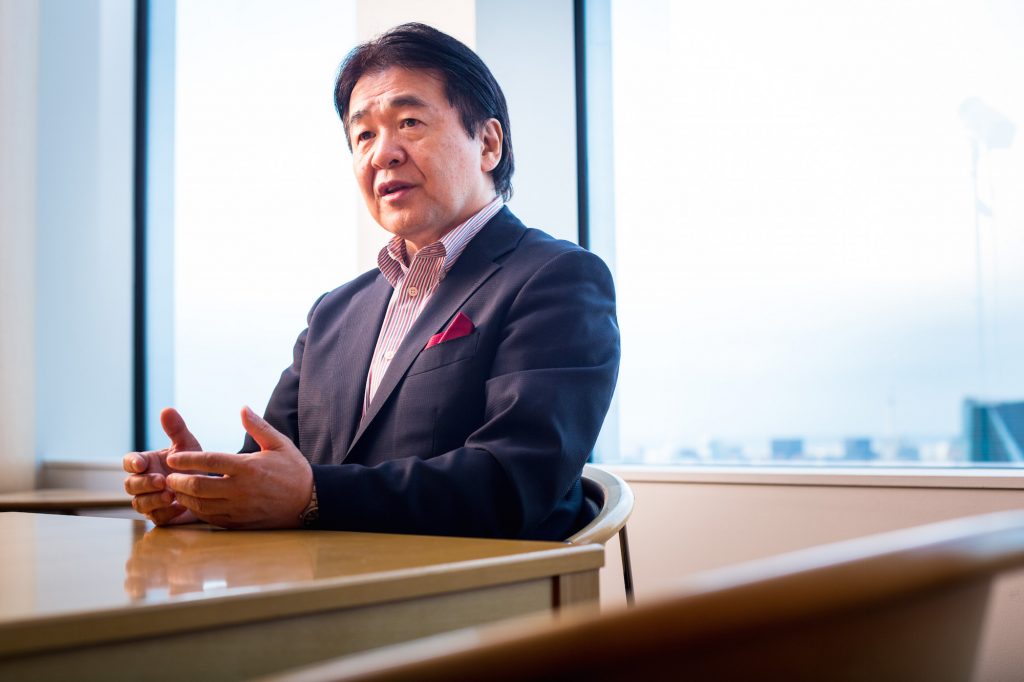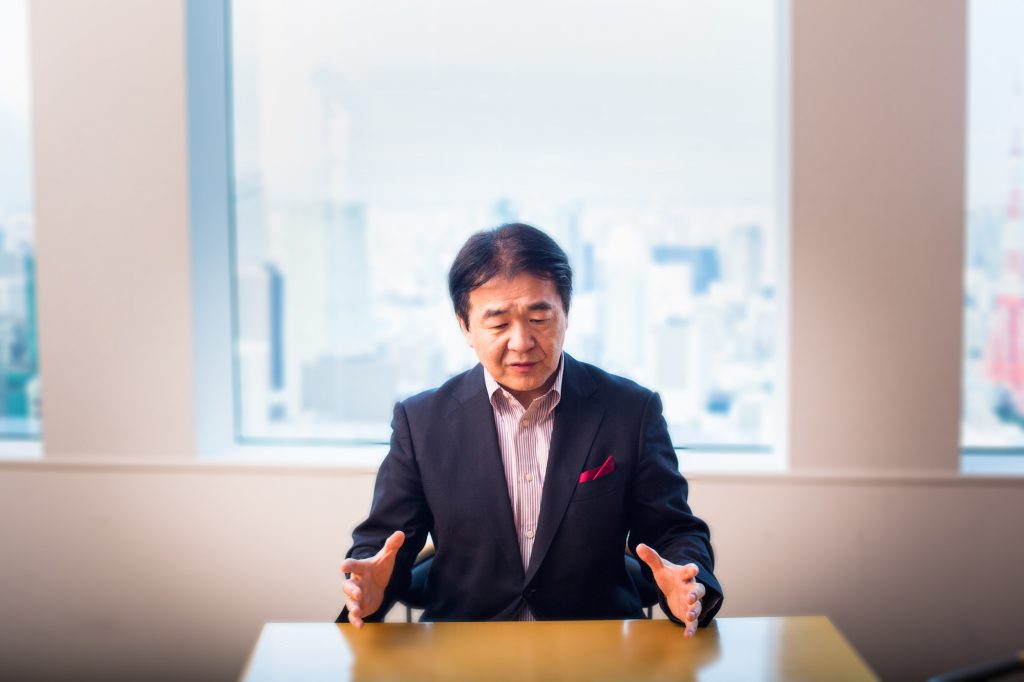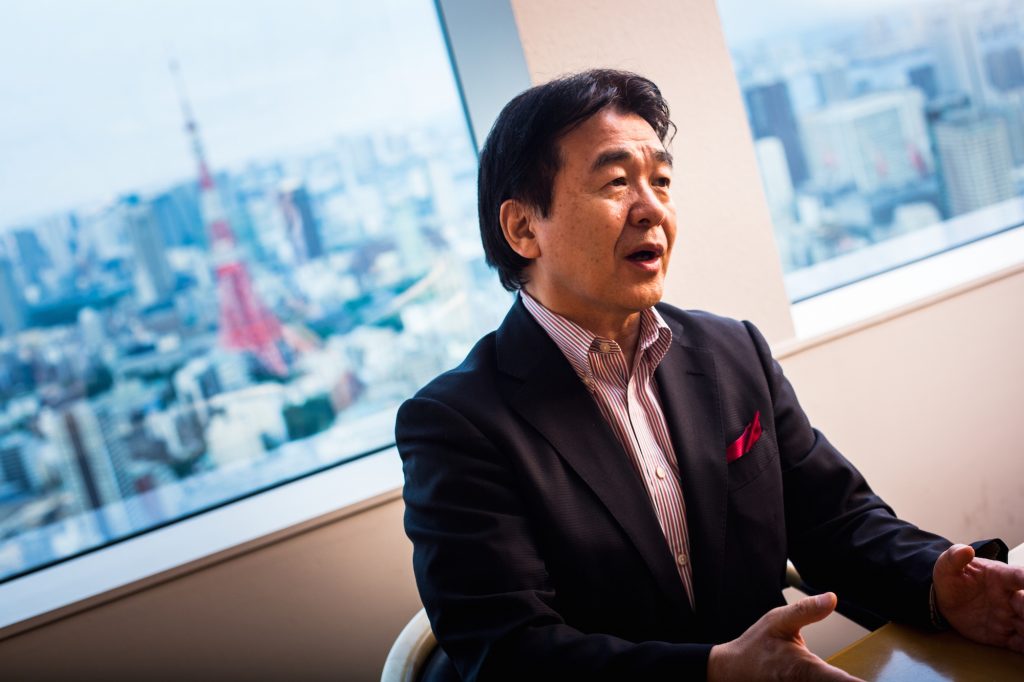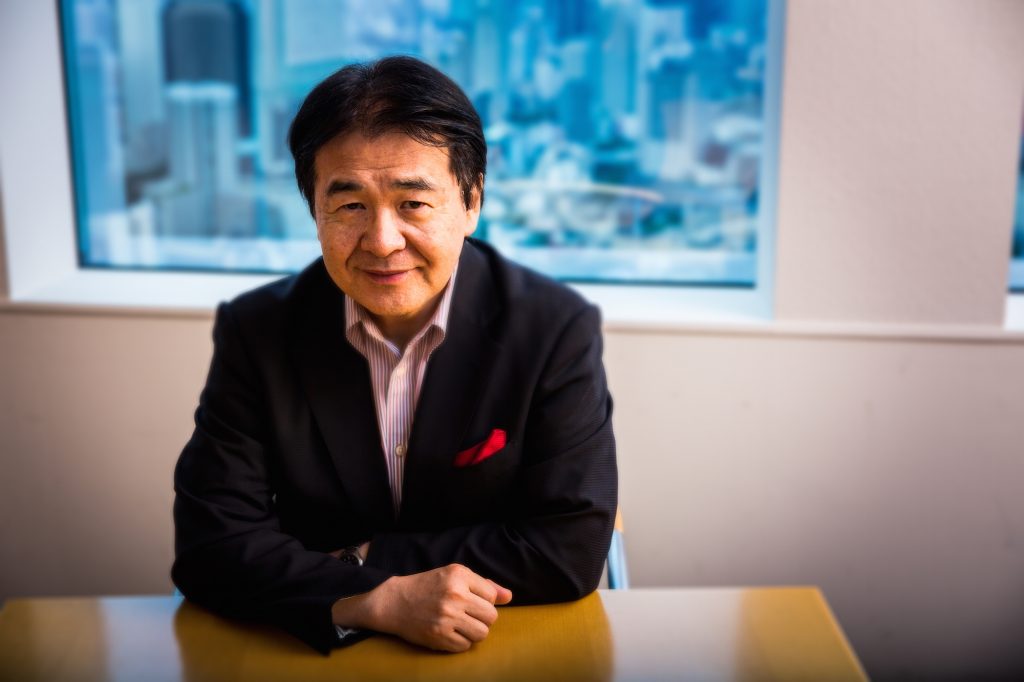"Urban Competitiveness" Drives Innovative Competitiveness. The Meaning of Imagining Cities in 2035.
ICF Committee Interview – Heizo Takenaka
"Urban Competitiveness" Drives Innovative Competitiveness. The Meaning of Imagining Cities in 2035.
Innovation Can Be Born in “Cities”
When asked about the reasons for launching the Innovative City Forum, it is my understanding that cities are the hubs of innovation, and are places of advocacy for new and progressive lifestyles.
The 21st century is an age of innovation.
Several years ago the British news magazine “The Economist” published a book called “Megachange: The world in 2050.” And included in its pages was an argument that the 21st century would usher in “an age of Schumpeterian competition.”
Innovation is something that certainly “occurs in cities.”
Innovation is the combination or union of new elements – in other words a phenomenon which is born through the joining of new connections. There are several varieties of such connections, such as through people or companies, and innovation emerges from the new bonds forged therein. There is special meaning in “cities” precisely because they provide the venues for these connections to take place.
In some sense, global competition is in fact a competition between cities. In the rivalry between Japan, the United States, and China, there is a strong aspect which makes it a competition between Tokyo, New York, and Beijing and Shanghai. In such an environment, I have been accutely aware of the issues including what a future city should be, and what it needs to do in order to become an innovative city.
And there is one more important thing. Cities should be a venue of advocacy for new lifestyles. Similarly, fashion, styles of working, and ways of life are all born in the cities. The Innovative City Forum, which was launched from these perspectives and viewpoints, welcomes its fourth incarnation this year. If Innovative City were to be described in different words, it perhaps could be called a foundation from which a “creative class” is developed to bear the burden of innovation. And accordingly, there are 3 elements that develop a creative class - “technology,” “art,” and “urban space” – which are critically important, and the process of accruing discussions and debate from these perspectives has been consistently conducted up to now.
When this year’s Innovative City Forum 2016 opens, a series of activities targeting Tokyo 2020 will begin. First, in the Roppongi Hills area, the government and private sector will join forces to host the World Forum on Sport and Culture. There, the annual convention for the Young Global Leaders of the World Economic Forum (held in Davos) will also take place. As part of these extremely important international meetings, the Innovative City Forum will be held at Toranomon Hills. And in addition, the Roppongi Hills area will also host the Roppongi Art Night. So preparations are underway for this exceedingly comprehensive kick-off event.

After the 2012 Olympics, London Enhanced its Competitive Strength as a City. Can Tokyo Evolve?
At the Institute for Urban Strategies at the Mori Memorial Foundation – for which I serve as director, we began publishing the “Global Power City Index” 5 years ago. In the past, there have been ranking indexes for specific fields of study, such as finance and safety, but never a comprehensive ranking of cities. Furthermore, most of these indexes were conducted overseas, and so I began the process of putting together a ranking index of cities which would originate from Japan. Thanks to a multitude of efforts, our work has received extremely high acclaim from experts around the world. And we are now scheduled to announce the release of a new Global Power City Index at this year’s Innovative City Forum 2016.
The first index listed, in order, New York, London, Paris, and Tokyo. But in 2012, the London Olympics provided the momentum to place London in first, followed by New York, Paris, and Tokyo. In Asia, Singapore and Seoul have increased their competitive strength, while in Europe, cities like Vienna and Frankfurt have maintained high-ranking and stable positions. It is important that our cities learn from each other, and overcome our respective weaknesses. And simultaneously, we will be pushing forward projects for considering the perspectives of what our cities should be like in the year 2035. We would like to conduct sessions which will reflect these processes at the Innovative City Forum.
Although Tokyo possesses the capabilities to be ranked 4th in the world, at the same time, the city faces an assortment of issues – for example, corporate taxes are expensive, there is room for improvement with access to and from airports, and progress needs to be made in loosening regulations. We hope to work together with corporations and the government in making improvements.

What Cities Around the World Can Learn from “Tokyo”
Tokyo enjoys an overwhelmingly large GDP, and in comparison with New York or London, has potential for high production capacity. At the same time, it deserves attention as a “venue for integration.” Connectivity is very important for innovation, and a city – where a variety of factors can integrate and accumulate, is extremely vital, and will prove to be a strength.
Researchers can look to Tokyo as a city with a large cluster of universities, possessing strong capabilities. I believe that this is one of the primary factors which has supported Japan’s technological strength.
And if I were to add another factor, there is the “environment.”
While Tokyo has a population of 35 million, being able to enjoy such a wide expanse of blue skies and delicious drinking water are truly strengths of this city. On the other hand, finding ways to create a more business-friendly environment is one of the many things which I believe Tokyo can learn from other cities in the world.

What will be the Discussions Concerning “Tokyo in 2035” at the Innovative City Forum?
An important factor to consider when thinking about Tokyo 20 years into the future is, the progress of technology. We are said to be in the age of Industry 4.0, or the fourth industrial revolution, and we are seeing an unprecedented level of business development with the utilization of big data accumulated in our smartphones. With the expansion of the sharing economy, we are experiencing the birth of new fields utilizing technologies like artificial intelligence. At the same time, there will be jobs that will begin to disappear. Professor Michael A. Osborne, who researches artificial intelligence at Oxford University, has published shocking numbers which indicate that within 10 to 20 years, 47% of jobs may be eliminated. With that in mind, we will conduct brainstorming sessions together with a variety of experts from diverse fields – such as technology professionals and specialists in urban engineering, to discuss the future of Tokyo, 20 years from now.
As technology continues to progress, for example, new methods of communication may emerge, eliminating the necessity to commute from the suburbs to city centers, freeing up how we work. But while flexibility may increase, “human relationships” – which were maintained through such customs as getting together at offices and chatting – might begin to fade and weaken. While things may become more convenient in one sense, people may find themselves increasingly isolated. And as a result, because we have become so lonely and isolated, in the future we may find ourselves needing the advice of counselors, or requiring some form of emotional release, perhaps through art.
And so, as we can see, when changes occur, there are both positive and negative sides. When that time comes, we will need to maximize positive impact, while minimizing the negative aspects. And this is where the potential for generating new jobs is hidden.
As we speak, it is these kinds of multi-dimensional debates which we continue to engage in and discuss.

Heizo Takenaka
Professor at Toyo University / Professor Emeritus Keio University / Director at The Institute for Urban Strategies at the Mori Memorial Foundation / Director at Academy Hills
After tenures which included posts as a Visiting Scholar at Harvard University, and as Professor of Policy Management at Keio University, he paved the way for his political career by becoming Minister of State for Economic and Fiscal Policy for the Koizumi cabinet in 2001, and subsequently served as Minister of State for Financial Services, while holding a post in charge of the Japan Post privatization, and as Minister of Internal Affairs and Communications. PhD in Economics.
His books include, “The Economic Classics are Useful” (Kobunsha), “The Takenaka-style Matrix Studying Method” (Gentosha), “The Structural Reforms of the Koizumi Cabinet – an insider’s account of the economic revival of Japan”(Nikkei Publishing), “Development Studies and Capital Expenditure Economics” (Suntory Prize for Social Sciences and Humanities, Toyo Keizai).

